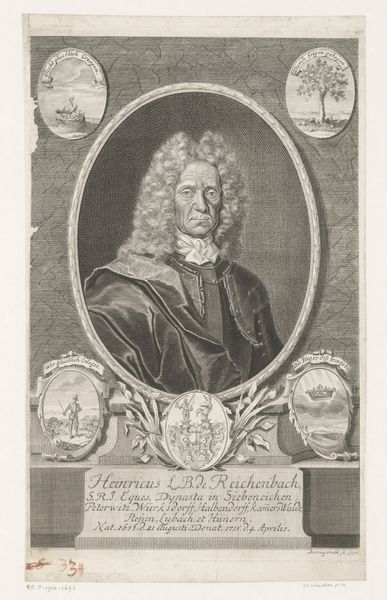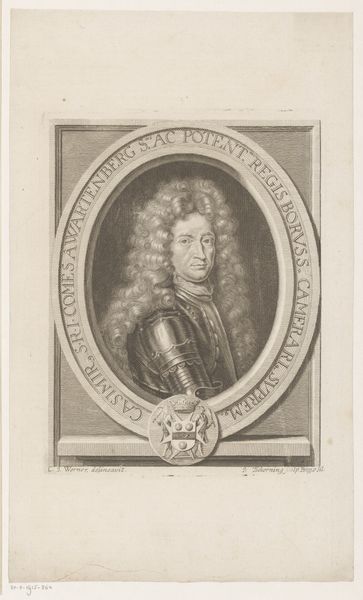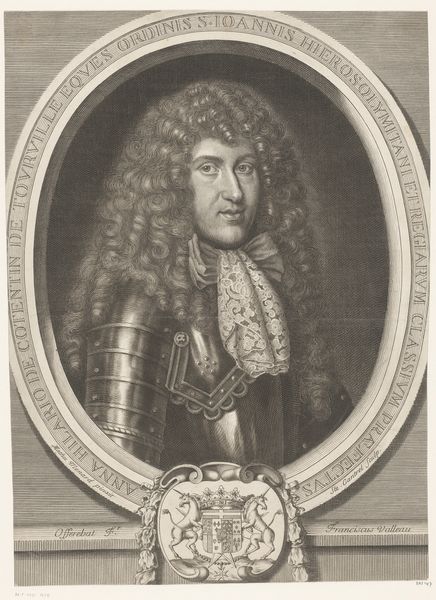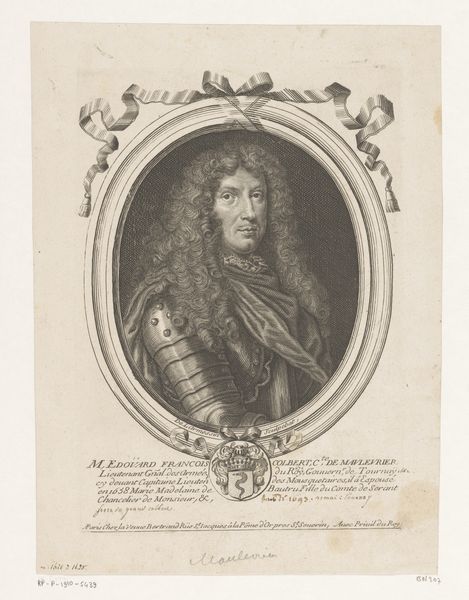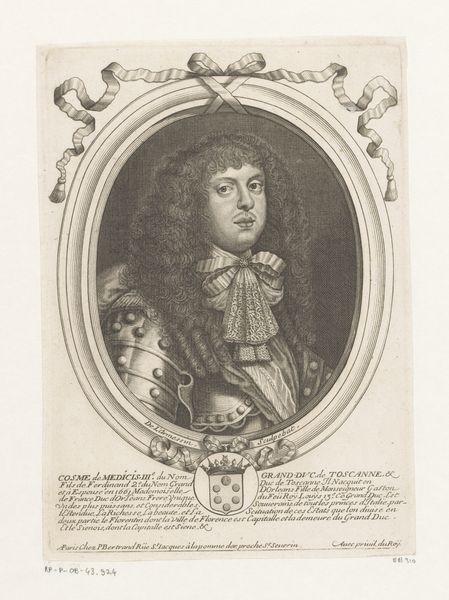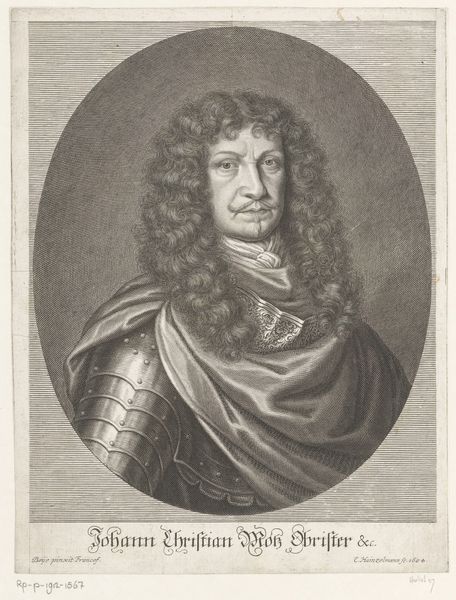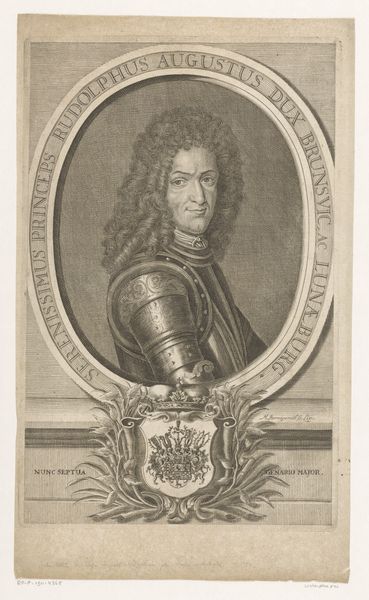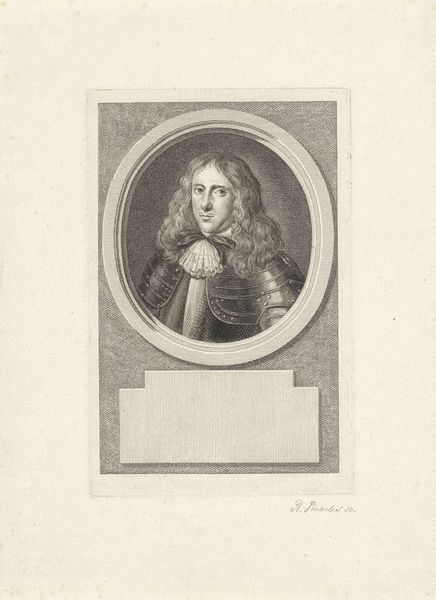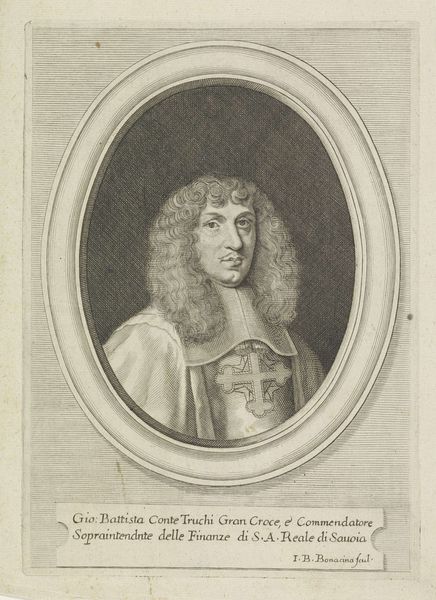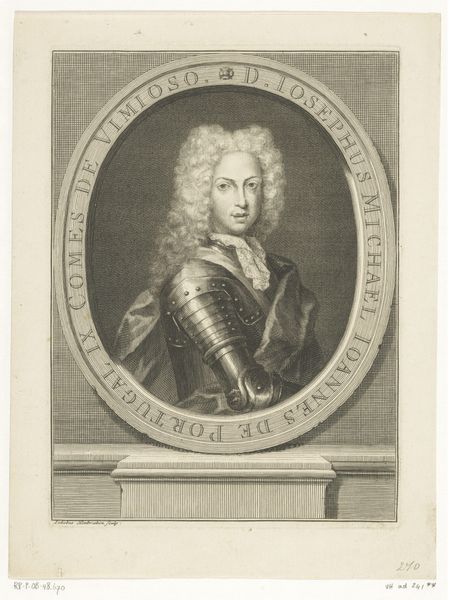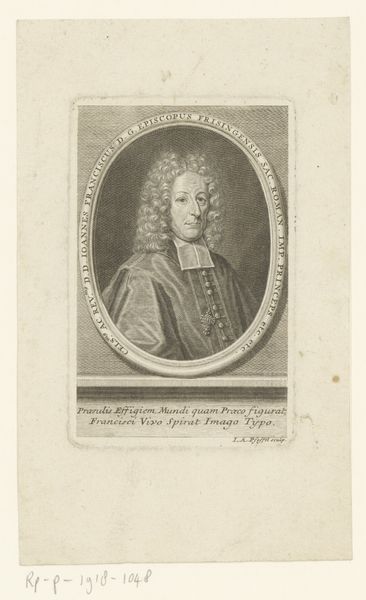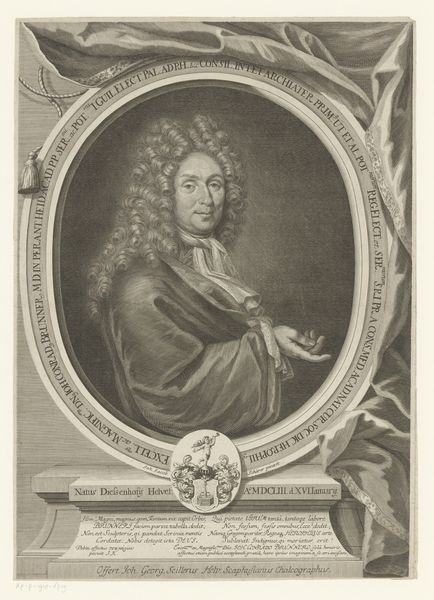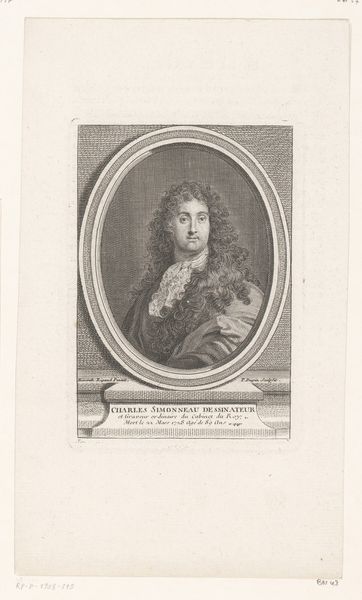
print, engraving
#
portrait
#
toned paper
#
baroque
# print
#
old engraving style
#
form
#
framed image
#
line
#
engraving
Dimensions: height 250 mm, width 196 mm
Copyright: Rijks Museum: Open Domain
This engraving portrays Blaise François Pagan, rendered by Jacques Lubin in the late 17th century. Pagan is depicted in armor, a symbol deeply rooted in martial prowess and nobility. Armor, throughout history, from the bronze cuirasses of classical antiquity to the plate armor of the Renaissance, evokes images of power, protection, and the warrior ethos. Consider the appearance of armor in classical sculpture, where gods and heroes are often portrayed clad in idealized versions, signifying invincibility and divine favor. This visual language extends through medieval tapestries and Renaissance paintings, each reiteration reinforcing the cultural significance of armor as a marker of status and strength. The visual impact of the armor, thus, is not merely aesthetic; it stirs collective memories of valor and authority, engaging the viewer in a subconscious dialogue with historical ideals and archetypes of leadership. The image serves as a reminder of how symbols continually resurface, adapt, and acquire new layers of meaning across the epochs.
Comments
No comments
Be the first to comment and join the conversation on the ultimate creative platform.
